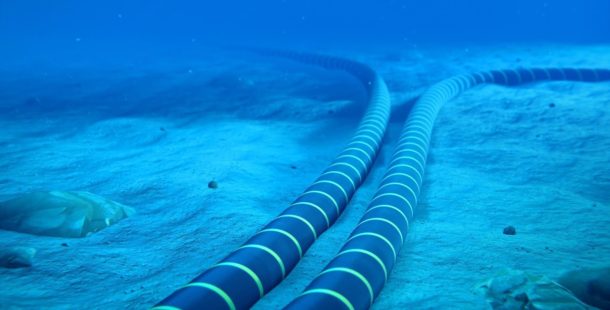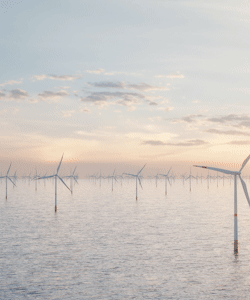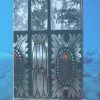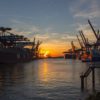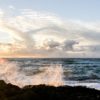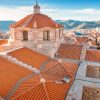
We currently live in a changing world where the control of large maritime spaces has become a priority for States, especially when there is a concern for sovereignty over these spaces and we intend to monitor everything that can contribute to our sustainable development. In Portugal. The “new” SMART Cables technology will be a relevant contribution to this goal. In this opinion article we intend to raise some key questions and contribute to a debate that we believe to be useful and very necessary for the development and security in Portugal and in the world.
The observation of the seabed has been practiced either through sensors attached to buoys or through sensors installed in submarine cable, cables that are dedicated exclusively for this purpose. This is very costly, both in installation and in operation and maintenance, and has a limited scope. Also, for the sensors attached to the buoys it is not always possible to obtain the data in real time (this strongly conditions the use of the data for immediate actions), and the feeding of the sensors is made by batteries that must be periodically replaced. The use of dedicated submarine cables for detection has been practiced in Japan for about two decades, has clear advantages over the use of buoys, but is even more expensive.
A long-distance submarine (fiber optic) cable needs to use periodically spaced repeaters so that the transmitted signal can be regenerated along the route. The repeaters require power for their power (optical amplification, etc.) and therefore the submarine cable also has a copper conductor along the entire cable for service of the repeaters. The spacing of the repeaters is conditioned to various factors (bandwidth, transmission capacity, power consumption, etc.) and as a typical spacing value can be considered a value between 60 and 80 km.
The Joint Task Force SMART (Science Monitoring and Reliable Telecommunications) Subsea Cables System is an informal association that is supported by three United Nations agencies (ITU, IOC-UNESCO and WMO), and aims to promote the use of SMART Cables[1].
SMART Cables technology seeks to integrate a sensor network into a submarine telecommunications cable. These sensors can be installed in the repeaters of submarine cables or outside of them in a pod created to house the sensors. The sensors consume energy and use the energy that is made available to the repeaters. SMART Cables presents an innovative solution that consists of “taking a ride” from a submarine telecommunications cable, transforming this cable into a multipurpose infrastructure that in addition to carrying commercial data, will observe the seabed, producing and transmitting to land an amount of data in real time never verified until now.
The minimum sensor package advised by JTF SMART Cables are pressure sensors, temperature sensors and accelerometers. As optional may be considered other sensors such as salinity sensors, biological, vibration, hydrophones, etc.
The SMART Cables will be at the service of Science (Oceanography, Environment, Geophysics, …) and Society (possibility of early warnings to the population of occurrences of tsunamis and earthquakes), that is, of sustainable development, and the “clients” of the data on the part of the observation are public entities and institutes, universities, scientific organizations, etc.
The increase in investment by the observation part of a SMART Cable is estimated at about 10 to 20% of the investment related to the telecommunications part, and it is expected that for 25 years (lifetime of the submarine cable), the submerged sensors will be operating without the need for maintenance (without operation and maintenance costs of the submerged observation part).
The ultimate goal for SMART Cables is to achieve a Global Ocean Observing System based on sensors on the seabed that allow real-time observation and greater knowledge of underwater phenomena in deep waters (Deep Ocean Observing Strategy), functioning as a detection system for variations in currents, temperature, pressure, salinity, etc., in order to contribute to better understand the main problems we face in the oceans, such as global warming, climate change, natural disasters (Deep-Ocean Assessment and Reporting of Tsunamis System – DART (Howe and all, 2019, p.2).
There are currently about 1.1 million km of submarine cables in more than 400 submarine cables that cover almost the entirety of the planet. In this extension are covered the main oceans and all the continents, it is expected that in the next 10 years most of these cables will be replaced by new cables, with the possibility of a significant number of them being SMART, which when achieved would allow, according to Professor Bruce Howe, a global network to operate in the medium term (2019, p.14).
Portugal is not outside this global alignment, quite the contrary, at the so-called Ocean Conference, which took place in Lisbon (27 June 2022 – 01 July 2022) this[2] technology was publicly presented, and the Atlantic CAM was identified, a submarine cable to be installed between the mainland and the Azores to Madeira as SMART CABLE, following the principles emanated by JTF SMART Cables.
After its installation and entry into operation, scheduled for 2025/26, it will be possible to collect real-time data from submerged sensors installed along the 3,700 km of the Atlantic CAM route in a total investment that could amount to 150 million euros, which will include the observation part.
This technology will be in full operation in 2026, and will be a powerful instrument for the study of climate change as well as for the mitigation of the impact of natural disasters (tsunamis and earthquakes) because it will contribute to the realization of alerts and early warnings to the population of Portugal and neighbouring countries, with sufficient warning time, of the arrival of tsunamis and earthquakes to the land (if the epicenter of the earthquake is located on the high seas) [3]. The Atlantic CAM’s detection facility will also serve to protect the cable itself as external impacts on the cable may be detected, for instance to identify currents behaviour, landslides, etc. This may also be useful for protecting other cables in the vicinity of the Atlantic CAM.
SMART Atlantic CAM is a good example of a multi-purpose infrastructure with significant savings in investments to be made and operating costs to be borne and is clearly a “Blue&Green Approach” in terms of sustainability. With the entry into service of the Atlantic CAM, as a SMART CABLES, a national node for observing the seabed in the NE Atlantic region will be constituted, a node that will be pioneered and that will later be integrated into the global network of observation of the Oceans.
Atlantic CAM will be operated by the portuguese compnay IP Telecom, being financed 100% by the portuguese government.
Lisbon, 29 September 2023
Luís Brás Bernardino[5], PhD
[1] https://www.smartcables.org/
For more information we recommended the paper “SMART Cables for Observing the Global Ocean: Science and Implementation“, published on August 2, 2019 and produced in the context of JTF SMART Cables by its President, Dr. Bruce M. Howe Professor of the University of Hawaii (co-author) and accessible at: https://www.frontiersin.org/articles/10.3389/fmars.2019.00424/full
[2] https://www.anacom.pt/render.jsp?contentId=1724139
[3] https://www.ua.pt/pt/smartcss/
[4] Degree in telecommunications and electronics engineering from Instituto Superior Técnico, Lisbon in 1983. He held management, planning and procurement functions of international networks at CPR Marconi between 1984-2002. At Portugal Telecom during 2002-2003, he was responsible for the Administration of the International Network and at ANACOM, he served as Director of the External Relations Department during 2003-2020, and as Senior Consultant for International Connectivity and Submarine Cables between 2020-2023. It currently develops independent consulting activities in International Connectivity and Submarine Cables, namely in the use of the latter for environmental and seismic detection at the service of Science and Society. International specialist in submarine cables. [jose.barrosSCs@outlook.pt].
[5] Army Colonel (Reserve) with Staff Cours and the National Defence Course. Master in Strategy and PhD in International Relations from ISCSP – Lisbon University. Professor at the Military University Institute in Lisbon with extensive international experience and specifically in teaching and research. He is the author of 10 books, has published more than 100 articles in national and international scientific journals on Security, Defense and Development topics. During the National Defense Course has developed academic research on Submarine Cables and the impact on National Defence and Security in Portugal. [bernardino.lmb@ium.pt].





